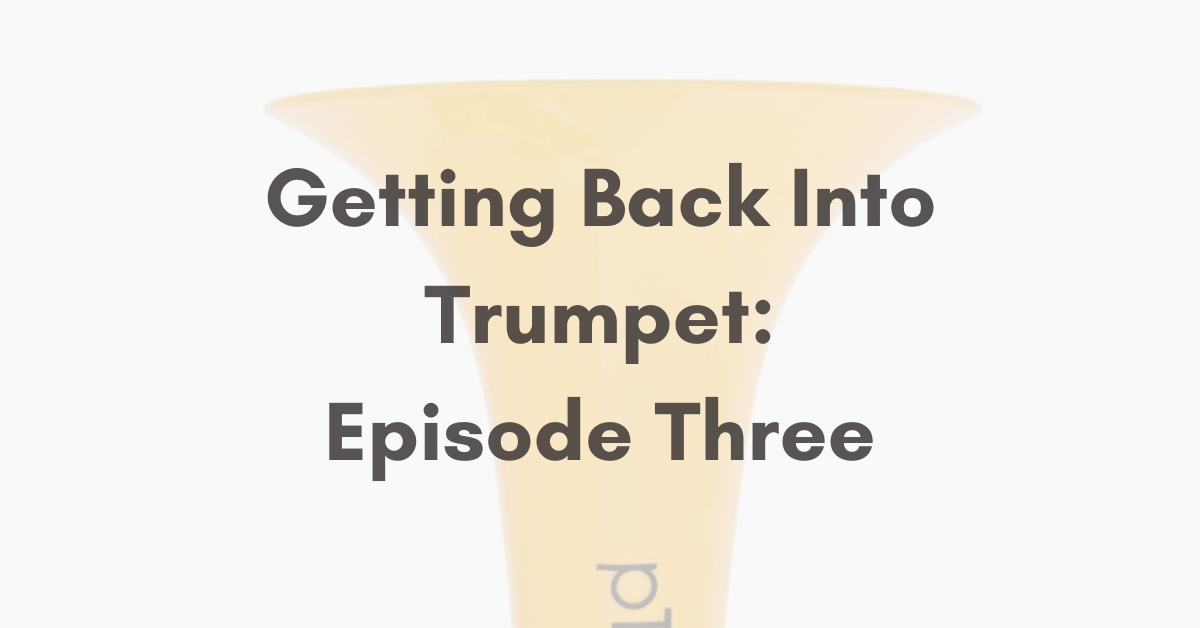
Topics:
January 26th, 2024
2 min read

Breathing is the core of trumpet playing.
Welcome to the third installment of the Recover series, where Grant Golding delves into the crucial aspect of trumpet playing: breathing. Breathing might seem mundane – something we do every day without thought – but for brass musicians, it's the cornerstone of their craft. Without proper breath control, the trumpet remains silent, a vessel awaiting the wind to give it voice.
Check out this episode of Getting Back Into Trumpet:
Grant emphasizes the importance of posture: standing tall with shoulders relaxed. The first exercise involves inhaling and exhaling with warmth, using the word 'HO' to guide the breath. This warm air technique is fundamental, ensuring the air flows smoothly, ready to animate the trumpet.
Next, Grant introduces a breathing rhythm: inhaling for four counts, then exhaling for eight. This exercise isn't just about filling and emptying the lungs; it's about awareness. It's feeling the muscles expand and contract, understanding how your body becomes an integral part of the instrument.
The transition from free breathing to playing is crucial. Grant suggests starting with your lips around the mouthpiece, focusing on the nuances of airflow – from slow to fast, quiet to loud. This step is where you begin to feel the instrument as an extension of yourself, where breathing and playing interweave seamlessly.
For those looking to push their limits, Grant introduces the 'goldfish breath.' It's a bit odd and might feel embarrassing, but it's incredibly effective. The exercise involves sipping in air until no more can fit, then releasing it all. This method stretches the ribcage and intercostal muscles, expanding your lung capacity. For an extra challenge, leaning forward in a chair can further engage your back muscles.
Grant notes the importance of safety in these exercises. If you ever feel dizzy, take a moment to sit and slow your breathing. The goal of these exercises is gradual improvement, not immediate perfection.
As you progress, remember that your practice room is your sanctuary. It's a space for mistakes and growth, a place where 'failing' is just the first attempt at learning. Use a practice mute if it makes you feel more comfortable, but always prioritize the flow of air and the movement of your body.
This week's focus is on building a steady, controlled airstream, setting the stage for next week's topic: embouchure. Remember, recovery is a gentle journey, one breath at a time.
For more trumpet-playing tips, check out the How to Play Trumpet area of the website.
Grant has been delving through the history archives to find the brass stories of yore. Discover the history of brass in the Classical period in this video and article.
Find out why pTrumpet hyTech is a great option for returning trumpeteers.
Adam is the Content Manager at pBone Music. This should mean that he’s the ideal person to write about himself, but he finds boasting in the third person a little awkward. He honed his word wizardry with a degree in English Language and Literature at the University of Leeds. He has since written copy for clients and businesses across the land, from awards to something beginning with “z”. He also spent a number of years as a musician. He has written pop songs and even jingles for kids, performed more first dances at weddings than you could shake a pBuzz at, and once played a gig for a pie company at The Etihad Stadium in Manchester. When he’s not reminiscing about those good old days, you might find Adam enjoying the football (although as an Everton fan, that can be difficult). He also loves spending time with his partner, Jen, and his family and friends, and sincerely hopes they feel the same way.
Topics: